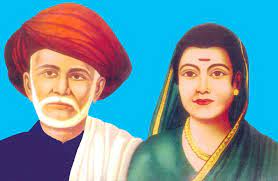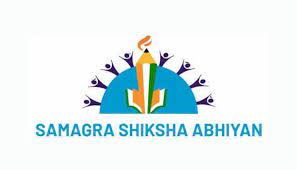
Savitribai Phule Biography: Savitribai Phule was a Maharashtrian poet, educator, and social reformer. She and her husband significantly contributed to the advancement of women’s rights in Maharashtra and in India. She is credited with founding the feminist movement in India. In 1848, Savitribai and her husband founded one of the first modern Indian girls’ schools in Pune, close to Bhide Wada. She campaigned to remove caste and gender prejudice and unfair treatment of individuals.
January 2023 Current Affairs Quiz
During the nineteenth century, Savitribai Jyotirao Phule, a well-known Indian social reformer, educator, and poet, made a significant contribution to the education and empowerment of women. Savitribai, one of the few literate women of her age, is recognised for building the first girls’ school in Pune with her husband Jyotirao Phule in Bhide Wada.
She made significant efforts to educate and emancipate child widows, advocated for widow remarriage, and ran a campaign against child marriage and sati pratha. Along with B. R. Ambedkar and Annabhau Sathe, she is regarded as an icon of the Dalit Mang caste and was a key player in Maharashtra’s social reform movement. She aggressively sought to remove caste- and gender-based discrimination and advocated against untouchability.
Savitribai Phule Early And Personal Life
Savitribai Phule was created on January 3, 1831 in the Satara District village of Naigaon, Maharashtra. She was born roughly 50 km (31 miles) from Pune and about 15 km (9.3 miles) from Shirval. Lakshmi and Khandoji Nevase Patil, who both belonged to the Mali Community, raised Savitribai Phule as their youngest child. There were three siblings. When she was nine or ten years old, Savitribai married Jyotirao Phule (he was 13). No children of their own were born to Savitribai and Jyotirao. Yashawantrao, a son born to a Brahmin widow, is claimed to have been adopted by them. To support this, nevertheless, there is currently no original evidence. No one reportedly wanted to offer Yashwant a female when he was getting married because he was born to a widow. Thus, in February 1889, Savitribai organised his marriage to Dynoba Sasane, a member of her group.
No children were born to Savitribai and Jyotirao. It’s claimed that they adopted Yashawantrao, a Brahmin widow’s son. However, this has not yet been supported by any original evidence. Yashwant was allegedly refused a girl when he was set to get married because he was the son of a widow. As a result, in February 1889, Savitribai arranged for his marriage to the daughter of a member of her organisation.
Savitribai Phule Education
When Savitribai got married, she was illiterate. Along with working on their farm, Jyotirao schooled Savitribai and Sagunabai Shirsagar, his cousin sister, in their residence. She received her primary education from Jyotirao, and his friends Sakharam Yeshwant Paranjpe and Keshav Shivram Bhavalkar were in charge of her secondary education. She also enrolled in two teacher-training programmes, the first of which was at a Pune Normal School and the second at an Ahmednagar institution headed by American missionary Cynthia Farrar. Given her education, Savitribai might have been the first female headmistress and teacher in India.
Savitribai Phule Career
Savitribai Phule began instructing girls at the Maharwada in Pune after completing her teacher training. She did this with the help of Sagunabai Kshirsagar, a female revolutionary and Jyotirao’s tutor. Soon after starting to work as Sagunabai’s assistants, Savitribai, Jyotirao Phule, and Sagunabai opened their own school in Bhide Wada.
Tatya Saheb Bhide, who lived in Bhide Wada, was motivated by the job the trio was doing. Math, physics, and social studies were all part of the traditional western curriculum at Bhide Wada. By the end of 1851, Savitribai and Jyotirao Phule were in charge of three different girls’ schools in Pune. There were roughly 150 students enrolled among the three institutions. The three schools used different teaching strategies from those used in government schools, much like the curriculum did.
According to the author, Divya Kandukuri, the Phule methods were thought to be better to those employed by government institutions. In comparison to the number of boys enrolled in public schools, more girls than boys attended the Phule schools due to their reputation.
Savitribai and Jyotirao Phule founded two educational trusts in the 1850s. The Native,Male School in Pune and the Society for Promoting the Education of Mahars, Mangs, and Other Groups were their names. Under the direction of Savitribai Phule and later Fatima Sheikh, these two trusts eventually included a large number of schools. She opened a total of 18 schools with her husband and taught children from various castes. The pair also assisted pregnant rape victims deliver and safeguard their children by opening a care facility called Balhatya Pratibandhak Griha.





